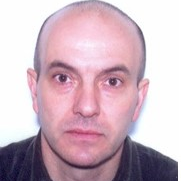Application of Geophysical Methods for Groundwater Management and Monitoring
A special issue of Water (ISSN 2073-4441). This special issue belongs to the section "Hydrogeology".
Deadline for manuscript submissions: closed (20 January 2024) | Viewed by 12698
Special Issue Editor
Special Issue Information
Dear colleagues,
It is my pleasure to invite you to submit your contribution to the specific volume of Water entitled “Application of Geophysical Methods for Groundwater Management and Monitoring”.
The main objective of this publication is to collect a series of novel works in the field of geophysical techniques applied to groundwater management and monitoring.
Geophysical techniques have evolved a lot in recent years, and research has focused on attempts for them to be applied to different geological and hydrological objectives and for the resolution they offer to be continuously increased.
This Special Issue will gather papers on the application of different geophysical methods to the management and monitoring of groundwater, serving as a useful tool for researchers and company professionals dedicated to this valuable resource.
Dr. Lluís Rivero
Guest Editor
Manuscript Submission Information
Manuscripts should be submitted online at www.mdpi.com by registering and logging in to this website. Once you are registered, click here to go to the submission form. Manuscripts can be submitted until the deadline. All submissions that pass pre-check are peer-reviewed. Accepted papers will be published continuously in the journal (as soon as accepted) and will be listed together on the special issue website. Research articles, review articles as well as short communications are invited. For planned papers, a title and short abstract (about 100 words) can be sent to the Editorial Office for announcement on this website.
Submitted manuscripts should not have been published previously, nor be under consideration for publication elsewhere (except conference proceedings papers). All manuscripts are thoroughly refereed through a single-blind peer-review process. A guide for authors and other relevant information for submission of manuscripts is available on the Instructions for Authors page. Water is an international peer-reviewed open access semimonthly journal published by MDPI.
Please visit the Instructions for Authors page before submitting a manuscript. The Article Processing Charge (APC) for publication in this open access journal is 2600 CHF (Swiss Francs). Submitted papers should be well formatted and use good English. Authors may use MDPI's English editing service prior to publication or during author revisions.
Keywords
- Geophysical methods
- Monitoring
- Groundwater
- Management
- 4D





